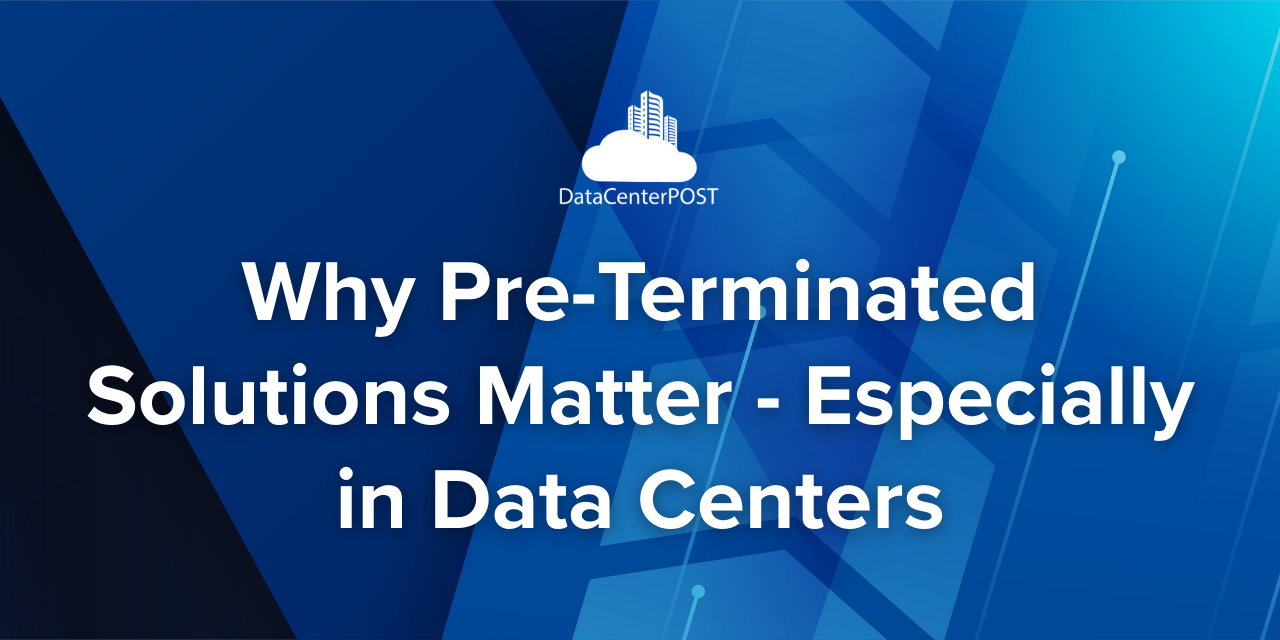Right now, North American data centers are facing record demand. AI workloads are reshaping internal DC networking. Traditional uniform networks are giving way to dual-fabric architectures: an architecture for standard cloud functions, and a backend specialized for GPU-heavy AI workloads, with links of 400–800 Gbps per GPU and sub-microsecond latency demands.
Meeting this surge depends heavily on fiber cables. These provide the ultra-high bandwidth required to move massive datasets rapidly and reliably. DataCenter Frontier reports that AI-focused data centers may require two to four times more fiber cabling compared to traditional hyperscale facilities. The need for increased fiber connectivity isn’t just limited to inside the data center. The Fiber Broadband Association (FBA) noted in a recent study that supporting AI growth will require a 2× increase in fiber route miles and a 2.3× rise in total fiber miles by 2029, aligned with a tripling of hyperscale DC capacity.
More terminations with fewer skilled staff
However, as growth continues on its current trajectory, there aren’t enough people to build all the connections AI data centers require. According to the Uptime Institute: “More effort is needed to expand labor pools and skillsets to match the pace of capacity growth.” The FBA projects an immediate need for about 58,000 additional broadband staff, with an additional 120,000 required over the next decade. Compounding the challenge, more than 60% of today’s fiber-optic technicians are approaching retirement, reducing not only the active workforce but also the supply of mentors and trainers. This shortage doesn’t just affect residential FTTH builds — it extends to data center cabling teams, where precision installation, monitoring, and continuous upgrading of high-density fiber is critical. Limited space and staff availability on the one hand and AI- driven growth requirements on the other are putting a premium on the capability to roll out fast.
That’s where pre-terminated, or pre-connectorized, fiber comes in. These assemblies arrive factory-polished, tested, and ready to plug in, cutting installation time dramatically compared to field termination or splicing. This speed is critical in high-density racks where hundreds or thousands of connections may be needed to bring new servers, switches, or AI clusters online quickly. Factory-built, pre-qualified cables, trunks, cassettes, and harnesses compresses installation windows dramatically for server cabling and DCI trunks. That means operators can turn up halls and tenants significantly faster.
Other practical benefits
AI workloads are extremely sensitive to latency and packet loss. Poorly terminated cables can introduce micro-losses that cripple training efficiency. However, accurate onsite cable termination in a dense data center environment is difficult due to limited working space, time-consuming because of the hundreds of connections required, and risky since dust, poor cuts, or misalignment can compromise performance.
Preterminated cabling eliminates these challenges by reducing the need for specialized field technicians, minimizing human error, and simplifying troubleshooting. Factory-terminated cable ends ensure consistent polish, insertion loss, and return loss, meeting strict performance tolerances (OM4/OM5 multimode or OS2 single-mode fiber). Factory termination moves skilled tasks (polish/splice/QC) into controlled environments. This benefits quality control and installation quality vastly. Operators report ongoing difficulty hiring qualified staff and Uptime Institute points to human error as a factor in most outages over the long run—clearly, reducing manual steps is low-hanging fruit.
Support for high-density solutions
According to the Uptime Institute Global Data Center Survey 2024, average server rack densities are on the rise. High-density racks are vital to AI data centers because AI workloads are very different from traditional enterprise computing—they demand massive compute power, ultra-fast interconnects, and specialized infrastructure. AI training, for example, relies on ultra-low latency, high-bandwidth networking. Packing accelerators close together within high-density racks shortens signal paths and enables faster, more reliable east-west traffic between GPUs. With high-density racks, a data center can achieve more compute per square foot, delaying or reducing the need for expensive new buildouts. This is especially important in urban or space-constrained locations where data center real estate is limited.
However, high-density racks already push cable management to its limits. Pre-connectorized cables are cut to precise lengths and bundled with compact, low-profile connectors, reducing slack, bulk, and airflow blockages. Connectors are significantly easier to manipulate in confined spaces. As a bonus, operators can incrementally add more racks to grow AI capacity without re-engineering their entire facility and the improved airflow helps keep GPUs/servers cooler in AI-heavy deployments.
Polished performance
‘Precon’ fiber terminated in the factory offers complete control over ferrule geometry, polishing and end-face quality. Every link ships with certified insertion/return loss design. Factory polish/inspection makes loss and reflectance consistent at scale. That kind of predictability is much harder to achieve consistently in live construction environments. What’s more, MACs and migrations (10/25/100/400/800G) can be realised faster via cassette swaps and standard MPO/LC breakouts. For multi-tenant/colo environments in particular, interchangeability is vital. Standards such as TIA-942(facility/cabling topology), ISO/IEC 11801-5 (data-center generic cabling), TIA-568.3-D (optical components & MPO polarity), and IEC 61754-7 (MPO interface) enable multi-vendor sourcing and risk-free replacements.
Hyperscale/AI builds require thousands of high-density MPO (Multi-Fiber Push-On) connections per row. Ready-to-use integrated data center infrastructure, including high-density MPO solutions designed for rapid assembly, directly translate to significantly faster installs in data centers. Fewer field terminations means fewer opportunities for contamination, geometry issues, or polarity mistakes that force call-backs. MPO certification can be done trunk-by-trunk with purpose-built testers; fewer fan-outs, fewer touch points, and less rework.
Reducing high-skill tasks on site (no field polishing/splicing for most links), directly mitigates staff shortages and cuts installation time and cost enormously. In this way, ‘precon’ solution are proving vital to keeping up with demand and delivering on time, within budget, at the quality required—with fewer highly trained staff.
# # #
About the Author
Paulo Campos is President at R&M USA Inc.


